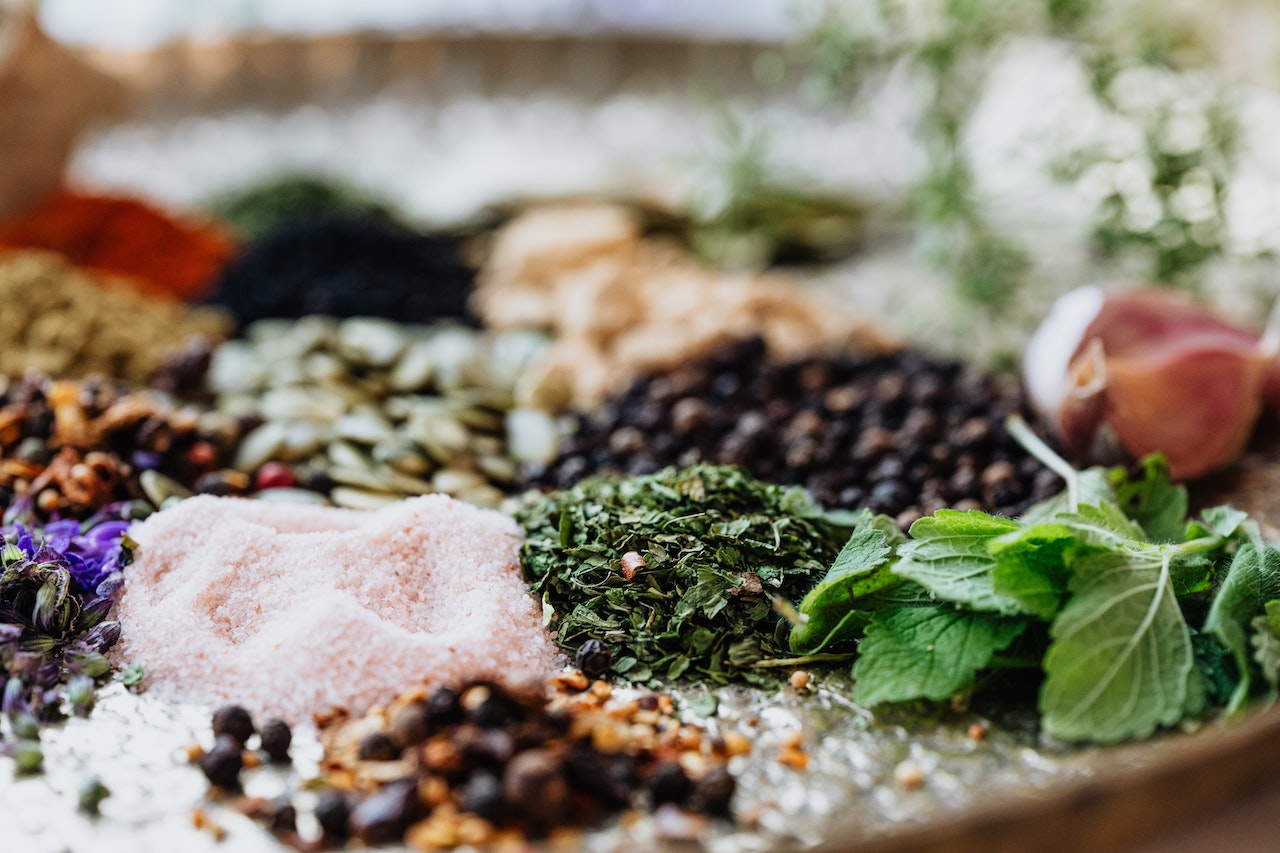Are you willing to know the wonder of spices and herbs and their uses? Cooking with spices and herbs improves taste and gives a variety of dishes depth, reducing the temptation to shake the salt. Whether you’re a seasoned chef or a home cook who prefers to “nuke it in the microwave,” it’s reasonable to assume that you’re familiar with salt and pepper shakers. The best approach to the season and to add flavor to various meals that might otherwise be bland is to add salt or pepper.
But since they aren’t acquainted with their various textures and taste profiles, many individuals refrain from using some of the stronger spices and herbs, such as cardamom, turmeric, and cilantro. Learn about some of the most helpful spices and herbs I’ve listed, many of which have been essential to cooking for ages, by reading this list of herbs and spices. You’ll be familiar with the spice and herbs category in no time.
Early Uses of Spices and Herbs
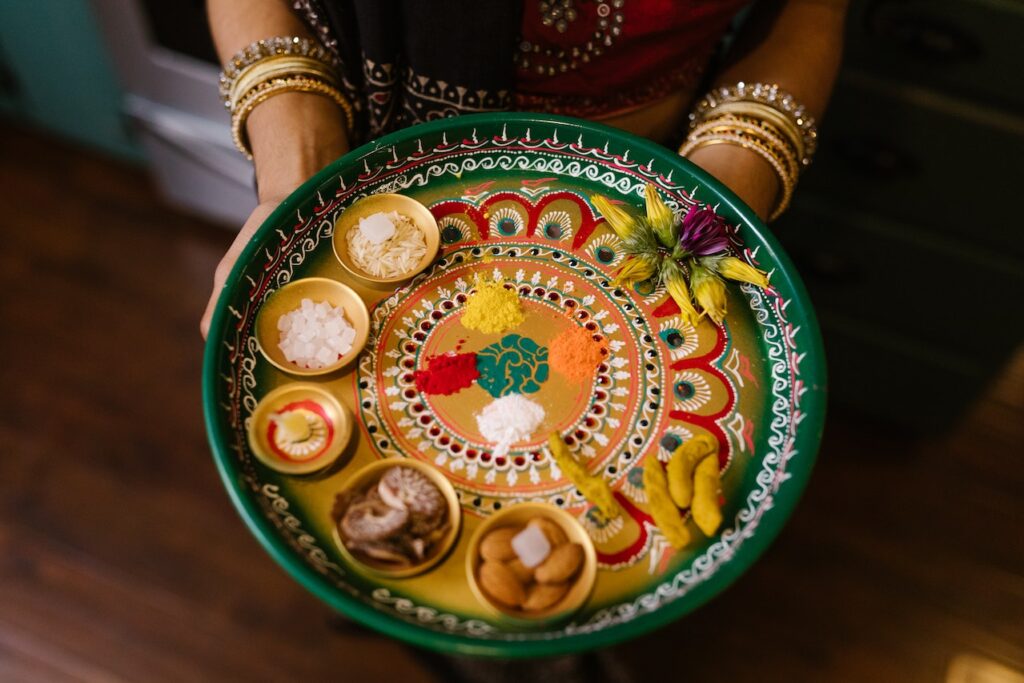
In very early times, the most important use for spices and herbs was as aphrodisiacs, manufacturing holy oils & unguents, and medicine. Shamans utilized them as charms to fend off bad spirits, while priests used them in rituals, incantations, and devotion. Aromatic plants were employed to freshen and scent the house. The use of spices and herbs in treating illness is attested to in ancient herbals (manuals for identifying plants and producing medical treatments) from Cathay, Assyria, Sumer, Greece, Egypt, and Rome.
In the first century of the Christian era, Pliny the Elder celebrated spices and herbs’ effectiveness and curative abilities in treating practically every illness known at the time in his Natural History. Through the Middle Ages & the Early Modern Era, such values, temperate and regulated, were recognized.
When did people start seasoning their meals with herbs and spices? Sesame oil and sesame seeds seem to have been utilized as food before the dawn of mankind. Early humans used garlic as part of their diet. There is little doubt that numerous spices and herbs had been used to flavor food and drinks by the time of ancient Greeks & Romans.
During the Abbasid Caliphate (CE 750–1258), herbs and spices were highly appreciated. In the city capital of Baghdad, lavish dinners thrown by the caliph used herbs and spices to create flavors like sweet, sour, aromatic, and spicy. Charlemagne published an edict in 812 CE that listed all the herbs & other plants which were to be planted on every imperial estate. Herbs were grown in monastic gardens in other parts of medieval Europe for culinary and medicinal purposes. Only the affluent could indulge in them since imported exotic spices were expensive and hard to come by.
Modern Uses of Spices and Herbs
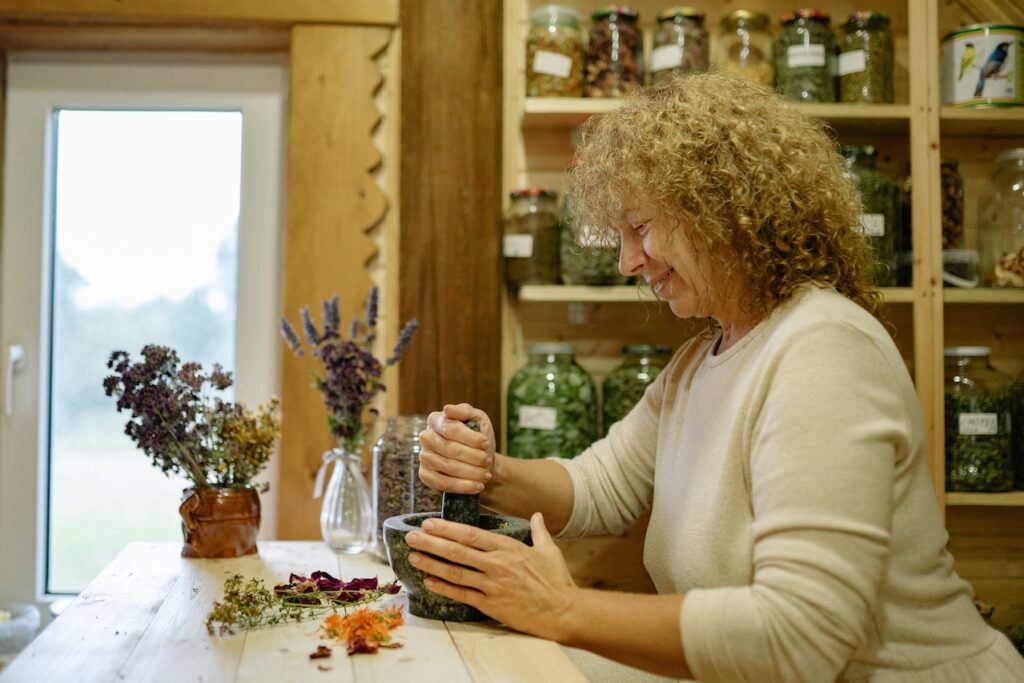
Many constantly evolving applications exist for herbs, spices, and spice seeds today. Few culinary recipes do not call for them, and their tasteful application lends a delicious, unique scent and flavor to various foods. They work in the food processing sector, preparing a wide range of goods, such as processed meats, sauces, sausages, mustards, pickles, vinegar, chutneys, and drinks. Various liqueurs, such as anisette, absinthe, benedictine, curaçao, crème de menthe, & kümmel, are also prepared using spices and herbs—or their oils when processing temperature allows.
Essential oils, which are the flavoring elements of extracts and are present in both herbs and spices, are used to make toothpaste, soap, lotion, shampoo, cosmetics, toiletries, and essential oils are used to flavor extracts used in the creation of extracts. Numerous spice flavorings and seasonings used in food production are made using these essential oils & oleoresins.
Since the extracts are simpler to combine, the volatile oil content can be measured, and the flavor strength may be altered, oil extractives of spices are often preferred over whole or crushed spices. Vanilla, grown in tropical areas, is a more popular extract for home cooking. Especially in China & India, where their healing properties are revered, spices and herbs still have a role in medicine. The therapeutic use of herbs and spices is less common in Western nations. Still, with the resurgence of interest in complementary treatments since the late twentieth century, their qualities are being further examined.
Spices and Herbs and Their Uses
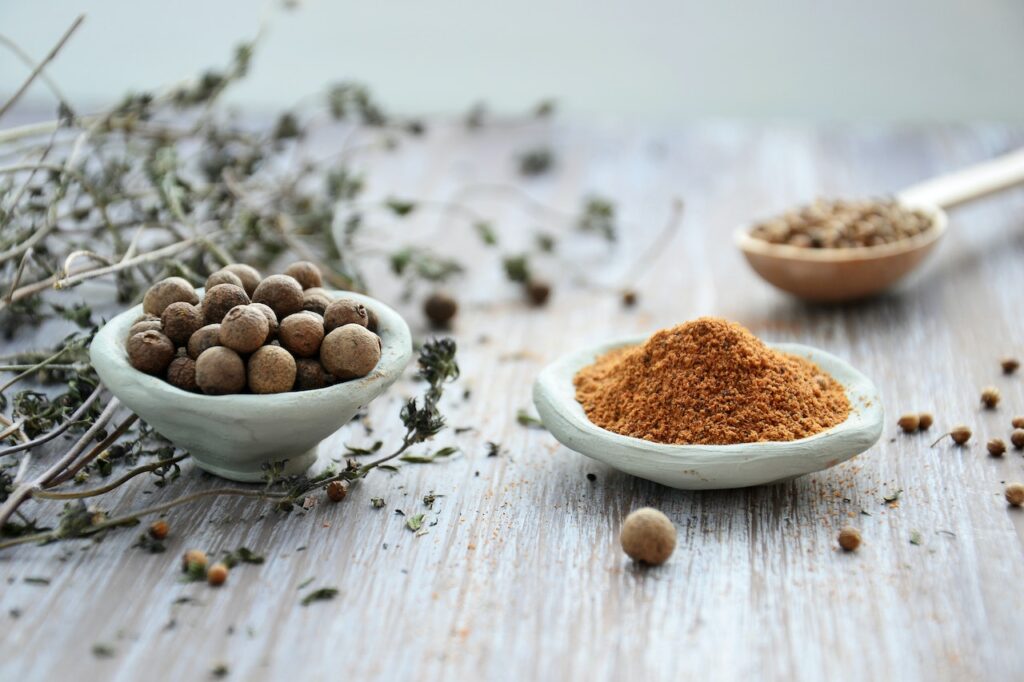
An herb typically originates from a plant’s leaf, while spices often come from the plant’s seeds, dry bark, or twigs. As they were and still are often employed in alternative medicine, spices are rich in nutrients and have many health advantages. Learn about several herbs and spices benefits, like turmeric and allspice, and how to utilize them!
🍶Basil
Basil is one of the most utilized herbs in the kitchen and has a sweet and earthy scent. The herb goes well with various soups, vegetables, and meat meals. It also makes a tasty appearance in pesto. Saint Joseph’s Wort is another name for this plant, a member of the Mint family. It’s a frequent ingredient in Italian cooking, especially tomato-based meals, making it the ideal topping for pizzas. A Margherita pizza, which consists mostly of tomato, mozzarella, and basil, may have been something you’ve had.
🍶Allspice
The tastes of cinnamon, nutmeg, cloves, and pepper are similar to those of allspice. Allspice is a spice that may be used whole or ground and adds taste to both sweet and savory recipes. It is also an essential component in Jamaican jerk chicken and spiced cider.
🍶Parsley
Due to its frequent dismissal as a simple garnish, parsley is a herb that is sometimes forgotten. But because of its moderate bitterness and freshness, it goes well in salads, as a topping for fresh bread when combined with melted butter, and glazes for meats & vegetables. Use a bit of parsley to give your breath some freshness after a meal. Italian and curly parsley are the two varieties. Italian parsley is flat & aromatic, whereas curly parsley has a mild flavor and crinkly leaves that should be carefully chopped before use.
🍶Cinnamon
The flavor of cinnamon, which has been described as sweet and woody, is best recognized for its comforting use in a variety of spiced breakfast recipes and sweets, such as this cinnamon apple pancake dish. Cinnamon may, however, do a double job in savory meals, such as the soups and braised foods that are further discussed below.
In the grocery, you may buy cinnamon either ground or in sticks. Sweets like apple cinnamon pie, sticky buns, and pull-apart cinnamon bread, ground cinnamon is often incorporated to give them a sweet taste. In place of sugar, you may also add some cinnamon for sweetness to your morning brew. On the other hand, hot apple cider and other winter and autumn beverages often include cinnamon sticks or bark.
🍶Chives
Chives are often mistaken for green onions & scallions since they are relatives of garlic, shallot, leek, and scallion. Although they may also be used to decorate fresh green salads, creamy potato salad, baked potatoes, deviled eggs, & to deepen the taste of butter, vinegar, and sauces, chives vary from other herbs by having a very thin, hollow stem.
🍶Cloves
Various foods benefit from cloves’ fragrant taste, including meats, curries, marinades, apples, and pears. The spice is best famous for its usage in pumpkin pie, particularly the delicious, heart-healthy mini pies made by bistroMD with only a few essential ingredients.
🍶Ginger
Chinese spice ginger comes in fresh and ground forms and contributes a spicy taste and a sweet, pleasant scent. Although fresh ginger may be replaced with powdered ginger, baking is where it is most often utilized. On the other hand, fresh ginger gives dishes some zing and is often used in Thai, Chinese, and Indian cuisine. Ginger is an excellent addition to smoothies because of its antioxidant and anti-inflammatory effects. Try consuming ginger as candies or capsules if you’re experiencing nausea or vertigo.
🍶Cumin
Cumin is a flowering plant whose seeds are used in cooking and may be prepared whole or crushed. Since curry powder mostly involves curry leaves, turmeric, coriander, and cumin, it is often used in curry recipes. Try this pumpkin curry and shrimp dish for a Thai take on a Thanksgiving staple!
🍶Bay Leaves
Herbs like bay leaves are often used to robust soups, stocks, and stews. Before consuming the food, you should take the leaf or leaves off. The stem of a bay leaf is tough to chew. Bay leaves give food a tangy taste. Use dried bay leaves rather than fresh ones since the former may overshadow the latter. If you decide to use fresh bay leaves, remove them from the dish before cooking.
🍶Cilantro
The same species of plants as coriander produces this herb. While cilantro is the plant’s leaf, coriander is a spice derived from the seeds. Cilantro is frequently utilized in sour cream and cuisines from Mexico and Spain. The aldehydes in it give it a faint soapy taste that many people find to be unpleasant.
🍶Oregano
For a good reason, oregano is often used in cooking. It goes especially well with Greek and Italian food. Greek-speaking people use the term oregano, which means “joy of the mountain.” When you add oregano, anticipate a somewhat bitter, woodsy taste.
🍶Turmeric
Indian spice turmeric reduces inflammation because it contains substances called curcuminoids. Curcumin, a compound found in significant quantities in turmeric, has been linked to several health advantages, including increased brain function. Use turmeric in smoothies, lattes, cauliflower steaks, and curries (it gives curry its yellow color). Use turmeric cautiously since it may stain your hands, clothing, and counters.
🍶Mint
Many individuals eat mint in several forms as they grow up, whether in a soothing cup of peppermint tea, mint-flavored toothpaste or as a breath-freshening mint candy before a date. Additionally, mint is utilized in Middle Eastern salads such as tabbouleh and meals with peas and beans. Since mint calms the stomach, peppermint tea is the ideal beverage after a substantial meal.
🍶Dill
Dill pickles come from feathery green leaves, often used in stews, soups, and pickling. Here are eight delectable dishes to employ a bunch of dills, such as golden quinoa salad with dill, lemon, and avocado, as well as grilled carrots with lemon and dill.
🍶Garlic
Garlic’s pungent and powerful tastes lend robust flavors to a variety of recipes, from powdered garlic utilized to flavor this grilled chicken on roasted garlic velouté sauce to the entire garlic head in this heated garlic hummus inside cucumber cups.
The Difference Between Spices and Herbs
Herbs are utilized for two major purposes: flavoring various types of meals and natural remedies. Basil, for example, is supposed to decrease inflammation and prevent indications of aging when ingested regularly. When taken frequently over a few months, Holy Basil, a plant extract manufactured from basil, is also beneficial for stress reduction.
Spices are often smaller than herbs since they are created from tiny sections of the plant, as opposed to herbs made from the plant’s leaves. The spices, like herbs, flavor meals while also providing health advantages. Spices that are often used include paprika, nutmeg, and turmeric. Because spices have a stronger taste than herbs, a little goes a long way when utilizing them.
Try to use fresh herbs rather than dried, but if you must use dried herbs, one teaspoon dried for a tablespoon chopped fresh is a good rule of thumb. When utilizing fresh herbs in a dish, add them towards the end to avoid their taste being destroyed by the heat. When cilantro, parsley, chives, or mint are dried, their taste alters or vanishes.
How To Use Spices and Herbs in Cooking
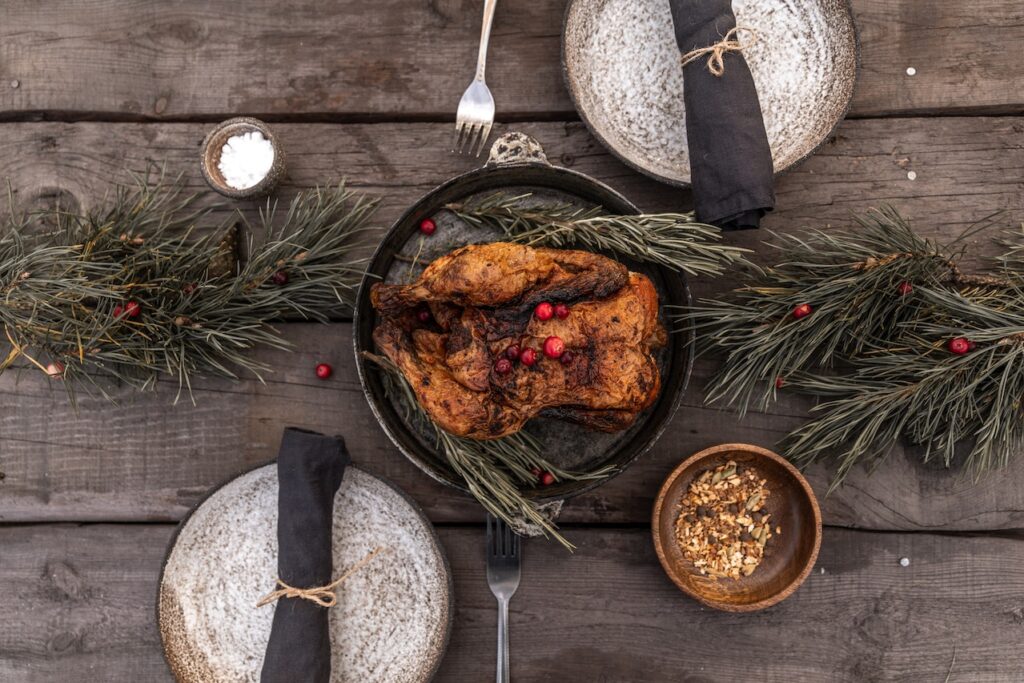
Is it as easy as pouring spices and herbs into the pot, pan, or dish to add flavor? Sometimes. Naturally, it depends on the meal you are cooking. While the food is cooking, as a garnish, the flavors may be added by marinating and infusing the flavor before cooking or by adding a dressing, sauce, spread, or dip after the dish has been completely cooked or prepared.
🥩Fried Dishes and Sautées
Herbs and spices are crucial whether a meal is cooked, browned, or fried to a crisp exterior. Garlic is a crucial starting point for both European and Asian cultures. It gives the butter or oil taste. Add chopped parsley next for the traditional French sautee used on seafood, shellfish, and vegetables. It may also be used with fish, poultry, or meats to create ragu, a sautéed meal, a stir fry, or other dishes. Once again, use the table below to add certain spices and herbs to create the character you want.
🥩Stews, Braising, and Curries
Herbs and spices are essential for roasting food, producing a stew (which often braises any meat or fowl included), or cooking a curry. Without the spices & herbs listed in the table below, the meal lacks taste and a foreign flare. And following French custom, the majority of these meals start with a vegetable basis known as mirepoix, made out of chopped onion, carrot, and celery.
The majority of the time, the spices and herbs are cooked into the food. The last addition includes several herbs whose taste would have been lost during cooking. Cooks of all levels may enjoy the culinary experience since many options and variants exist.
🥩Boiled or Steam
The taste of a herb or spice is often paired with a cuisine while steaming fish or veggies. Thyme with carrots, dill with salmon, or mint with peas. In these scenarios, adding the herb or spice resembles how one would season food with salt and pepper. Incorporate the new taste, then savor the combination.
🥩Baked or Roasted
Dried herbs and spices that can withstand the prolonged cooking process are often used while roasting and baking meats, poultry, fish, & vegetables. Use the chart below to add the foreign or fusion tastes you want. It is best to use fresh herbs. For instance, fresh rosemary enhances the taste of foods it pairs with the oven and fills the kitchen area with enticing fragrances that hint at the amazing meal that will be served.
🥩Grilling
To give grilled meats, poultry, fish, & vegetables a fantastic taste or an ethnic flavor, marinades and rubs are often used. The table below is used to apply marinades and rubs hours or even days before grilling. It’s common to use a mixture of fresh and dried herbs. Using chopped parsley with dry rub components helps smooth the application and provides more moisture and flavor after grilling.
Oils, fish sauce, and/or vinegar are only a few of the liquids used in marinades to enhance the taste. Other liquids include citrus juices, soy sauce, and barbecue sauce. These sauces, juices, and other liquids may intensify the dish’s taste or help define its cultural identity further.
🥩Soups, Broths, and Purées
Herbs and spices are essential for making mashed potatoes, pureed veggies, or squash. In the butter or oil, brown the garlic to add to the puree. Before mashing or pureeing, add seasonings from the list below to either add to the butter or oil or directly to the dish. The same principles apply to blended soups, including herbs and spices like bouquet garni and bay leaves, which sometimes need to be removed before blending.
Most of the time, the herbs and spices in broths need to be removed after preparation if you want them to be clear. When creating bone broth, for example, pho, star anise, cinnamon, and other spices are added throughout the simmering process and taken out just before it is ready.
🥩Garnishes
The most straightforward approach is to add a sprig of cilantro, parsley, or rosemary, a basil leaf, a sprinkle of thyme, or, better yet, microgreens of your preferred herb or edible blooms and flowers. A touch of paprika, nutmeg, or cinnamon may also achieve the same result. The complementary taste and color are applied when the dish is finished cooking.
🥩Dressings, Spreads, Dips, and Sauces
The medium is the first item to choose for imparting the taste of the herb or spice. There is probably a name for the sauce you developed if you start with a single of the five French sauces & then add your herb or spice. For instance, you may make Sauce Bearnaise by combining hollandaise sauce with tarragon and other ingredients. Most of those variants are mentioned in our blog, linked above. Sour buttermilk cream, yogurt, cream cheese, aioli, oil & vinegar, and other ingredients are examples of other media but are by no means restricted to them.
Frequently Asked Questions
Is buying whole or pre-ground spices preferable?
The decision to choose whole or ground spices is often based on convenience. Pre-ground spices are ready to use. However, freshly-ground spices need some preparation time. Freshly-ground spices are also more fragrant and aromatic than pre-ground spices. Because the oils that produce flavor and fragrance have yet to be disrupted, whole-ground spices have a longer shelf life.
How Are Whole Spices Used?
With the appropriate equipment, grinding whole spices is simple. You may use a mortar & pestle or a spice grinder to crush entire spices. Before grinding, roast your entire spices in a dry pan over low temperature until they begin to release their fragrance for the greatest taste. Since each spice cooks at a different rate, toast one spice at a time.
What are the herbs and spices?
Spices and herbs are compounds made from plants that enhance the taste of any food. Making a distinction between the two is challenging. Roots, leaves, rhizomes, bark, stems, fruits, flowers, & seeds are among the plant components that may be used to make spices. Typically, non-woody plants such as herbs are thought of.
How are dried spices and herbs kept in storage?
Spices stored properly will remain fresher and have a stronger taste over time. Herbs and spices, whether whole or ground, should be kept in sealed containers and kept away from direct heat in a cold, dark location.
What spice is used most commonly?
The tiny, wrinkly peppercorn has been crucial to the development of food. Due to its almost universal appeal and the impact that supplying its demand has on international commerce and exploration, it is the most significant spice in the world.
Final Words
After the study, the usage of spices and herbs was truly special. Spices and herbs are potent ingredients that do more than add flavor to food; they also enhance health and promote cultural variety. They are essential to our culinary experiences because of their exceptional tastes, aromatic characteristics, and health-promoting qualities. I thus hope you will enjoy the world of herbs and spices, try out new pairings, and learn about the enchantment they provide to our meals.

